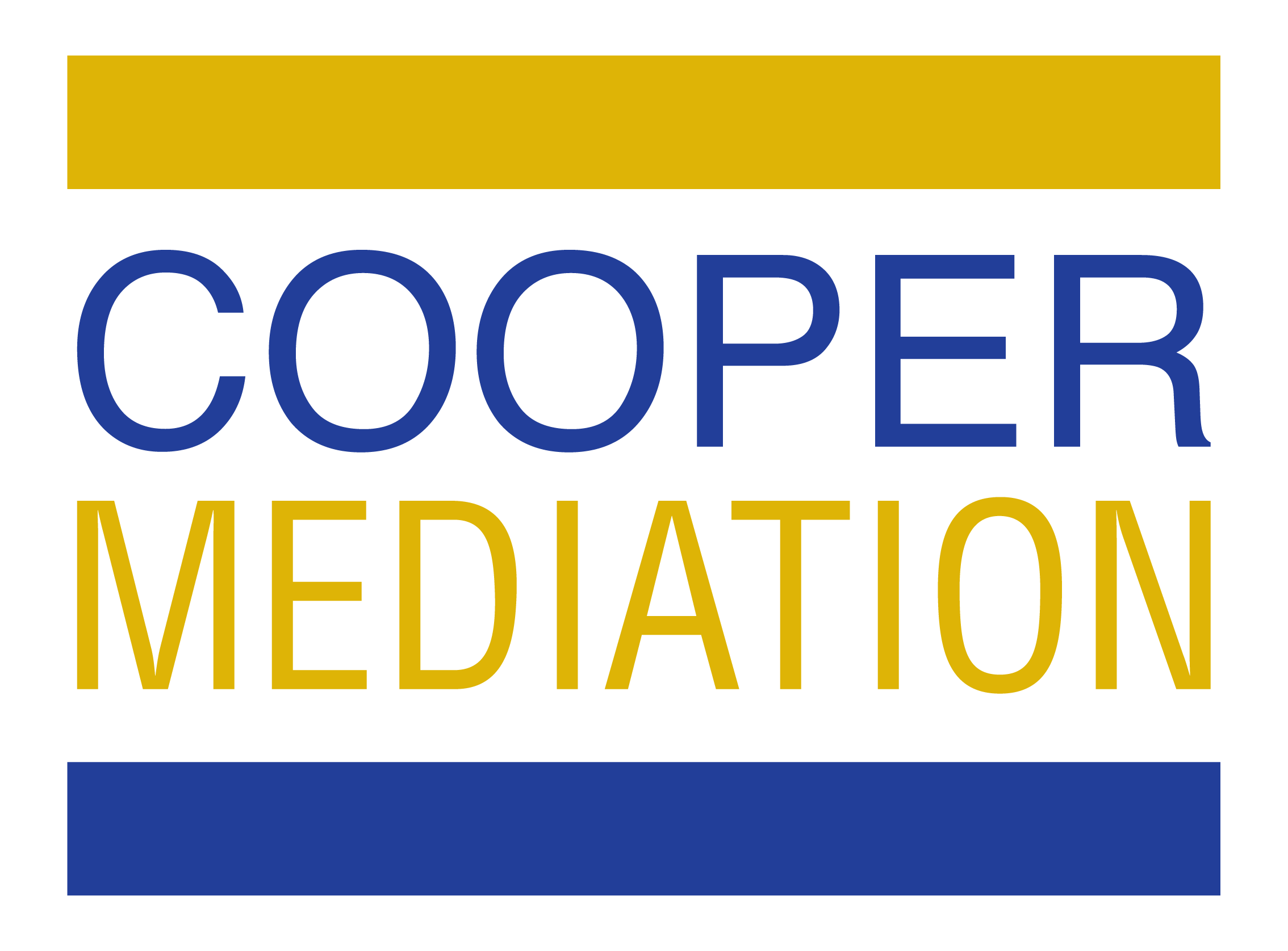
08 Dec Personal Injury Mediation 101: A Plaintiff’s Guide
“I’ll see you in court!” How many times have you heard that line on television shows or in movies as a set-up to a climactic courtroom showdown between two sides in a legal dispute? In reality, most lawsuits and civil actions are settled prior to court before lawyers for either side appear before a judge and/or jury. We rarely, if ever, hear “I’ll see you in mediation!” on the screen.
In fact, the chances of a case going to court are fairly low. Only an estimated 5 to 10% of personal injury cases go to court. The vast majority are settled before trial during a step in the legal dispute resolution process.
[ DOWNLOAD PDF VERSION ]
What is Mediation?
Mediation is a way for people to settle disputes or lawsuits outside of court. It is a form of alternative dispute resolution where a neutral third party (the mediator) facilitates discussions and negotiations between the participants to the lawsuit and their lawyers. The goal of mediation is to determine if there is common area to achieve a mutually agreeable settlement instead of carrying on in the litigation to a pre-trial conference and to trial. Unlike arbitration, the mediator does not decide cases or impose settlements.
Is Mediation a Required Step in a Personal Injury Case?
Yes – In some of Ontario’s judicial districts (Toronto, Ottawa and Windsor), mediation is mandatory prior to the pre-trial conference. Elsewhere in Ontario, mediation is optional for anyone involved in a civil action. It’s fairly common in personal injury cases and lawyers often suggest the process even if it isn’t a requirement.
Steps in a Personal Injury Claim
When an accident giving rise to personal injury occurs, the accident victim (plaintiff) and the others involved in the accident (defendant) generally retain legal counsel to begin the process of fact finding surrounding the incident.
If a plaintiff and counsel believe they have a viable claim, their counsel will draft a statement of claim (Step 1) which outlines the facts of the incident and injuries the plaintiff believes will support their claim. The amount of money claimed in this document is frequently irrelevant to the amount of money which counsel for the plaintiff believes they can prove in court or the amount of money which the defendant may be prepared to pay to settle the matter. Defence counsel will then respond with a statement of defence (Step 2) outlining pertinent facts and defences from the defendant’s perspective.
In Ontario, mediation (Step 3) often takes place following the exchange of statement of claim and statement of defence though it is often delayed until after the discovery phase (documentary and oral). In preparation for mediation, all sides will prepare mediation briefs or statements of issues for the mediator and other parties participating in the mediation. These briefs will be used to recite party’s position and inform discussions at mediation. Mediation briefs are typically longer and more detailed than opening statements which are made by counsel or the participants to the lawsuit at the mediation.
If some or all matters remain unsettled and the parties opt to proceed toward trial, an examination of discovery (Step 4) occurs. This is a fact-finding exercise where the plaintiff will be asked many questions under oath by defence counsel and is required to recount the details of his or her injury. Often at this point, there may be relevant documents and pieces of information outstanding which will be required if the case proceeds forward to trial, such as medical assessments conducted by doctors retained by defence counsel, surveillance, etc. (Step 5).
The discovery process also requires the plaintiff to produce all relevant documents to defence counsel for review and inspection. This would include the clinical notes and records of all treating doctors and other healthcare professionals from the time of the accident ongoing and may also include the clinical notes and records of treating healthcare professionals before the accident to the extent that the plaintiff’s preaccident health may be relevant to some or all of the injuries sustained in the accident. This would also include employment records, income tax returns, etc.
If the matter is not settled through the process of gathering relevant documents, the parties then attend a pre-trial settlement conference (Step 6) with a judge or other court official before proceeding to trial (Step 7), if necessary.
What Is The Goal of Mediation?
The goal of mediation is to open the lines of communication between parties in the hope of either finding terms for an agreeable settlement or clearing the way for the matter to go forward to a pre-trial conference or trial if agreement is impossible. As such, you should enter mediation knowing that, at worst, you will emerge with a better understanding of the position of the opposing party and how they view the facts and legal issues of the case. At best, with a full and final settlement, you will avoid the uncertainty, stress and the potential expense or other negative consequences of a trial.
Benefits of Mediation
Mediation can help parties resolve disputes faster, saving them time, money and stress. Many find mediation more satisfying than a trial because the participants to the lawsuit play an active role in resolving their dispute rather than having a decision imposed by a judge or jury.
The mediation process is informal and completely confidential. The parties in mediation may speak more openly than in court because there are confidentiality provisions in place to protect party’s position if the case does not settle and moves forward from the mediation.
Mediation isn’t the only opportunity to settle your case short of a trial though most consider it to be one of the best settlement opportunities because all of the decision-makers are present and focusing on one lawsuit for that one day.
What Skills Will My Lawyer Use At Mediation vs. Trial?
Although dispute resolution in mediation can result in tense discussions and put pressure on the parties present, lawyers will likely not use the same tactics or styles they would tend to use at a trial.
At a trial, lawyers are attempting to make their case based on the evidence put before the judge and/or jury and legal arguments and their interpretation of the facts. It is an adversarial process where they may attack and attempt to discredit the opposing party’s case.
Mediation, while still competitive and often intense, requires a degree of flexibility, cooperation and compromise. In mediation, counsel will still be representing their client’s interests; however, they will highlight the ways their opponent’s case could go wrong at trial and how settlement (on terms favourable to their client) would be in their best interest. Knowing that the case could still go to trial, counsel will also likely use techniques to try to draw out information for future use from the other parties while withholding some information themselves.
The Mediator’s Role
The mediator not only facilitates an information exchange and negotiation between the parties but also uses a special skillset to “read” the room and gauge whether there may be blockages that are frustrating a settlement. The mediator will not pass judgment on the case or its facts but may ask questions which prompt each side to re-evaluate their positions in the interest of finding room for movement towards a mutually acceptable settlement agreement.
The Plaintiff’s Role at Mediation
Mediation is an informal and confidential process. While the substance of the talks can be nerve-wracking, most participants will feel more at ease with this process than they would in a courtroom. As a plaintiff, you should be aware that you will not necessarily have to address everyone present during the mediation though you should feel free to do so (subject to the advice of your lawyer). Much of your time will be spent conferencing with your lawyer. You will have a first-hand, bird’s eye view of the facts and issues in dispute and, as a result, a fully informed understanding of why the matter should be negotiated toward or to settlement.
If the matter is being dealt with by the defendant’s insurer, the defendant will not likely be present at all. Mediation sessions can last anywhere from a couple of hours to full days, so you should dress in comfortable yet professional clothing.
How Will The Day Go?
Once the mediator introduces everyone present, explains his/her role and explains the purpose and process of mediation, all parties will give opening statements. All parties will have the opportunity to present their views on the facts, evidence and law and to explain what is important to them. There may be opportunities to ask questions and there may be opportunities for you to be asked questions (particularly if the examinations for discovery were held some time ago and if your medical or employment status is in flux).
During opening statements, the plaintiff’s counsel outlines the circumstances that led to the claim, describes the severity of the injury and may state the anticipated value of their client’s case. Defence counsel will offer an alternative understanding of the circumstances that led to the injury, its severity and why they believe the claim should be reduced or rejected.
After opening statements, each side is separated so they can conference independently as they make or receive offers during rounds of negotiations. These private negotiation sessions, known as caucus, continue until a settlement is reached, one or both parties opt(s) to leave the mediation or time runs out on the session and a settlement has not been reached.
Settlement vs. Trial Decision
A settlement through mediation is not a win or loss. It is a mutually agreeable outcome that provides a sense of certainty and closure for the parties involved. The mediator does not provide a decision as a judge would at trial. It is up to the participants to the lawsuit, with the assistance of their lawyers, to determine if they are in the range of settlement. If a settlement is reached, the mediator or the lawyers will write up the settlement terms so the necessary paperwork can be drawn up and filed with the court.
If a settlement is not reached, the parties can opt to schedule another mediation if they feel additional progress towards a settlement could be made with more time, information or documentation. Failing that, the parties and their lawyers will continue to prepare for a trial, likely with a better understanding for the facts and issues in dispute. Plaintiff’s may have a personal attachment to settlement demands put forward on their behalf. It is important to remember that a proposed settlement amount lower than the plaintiff’s initial demand does not mean that the plaintiff is “losing money.” The initial demand represents a plaintiff’s very best case and is typically well beyond reach at mediation and at trial. This change in thinking may help a plaintiff see what he or she is gaining instead of mourning a loss for a settlement demand which is not guaranteed. A defendant will similarly understand the trade-off between the certainty of a mutually agreeable settlement agreement versus the inherent risks and costs of a trial.
When deciding between moving forward to a trial or accepting a settlement that is “almost enough”, a plaintiff should keep in mind the cost of time and the value of peace of mind. Only you and your legal counsel will know your tolerance for risk versus reward.
After Mediation
Whether or not an agreement is reached on the day of mediation, the process can be valuable in its own right. When negotiating in the presence of a mediator, both sides in a dispute have the opportunity to engage with the other in an informal and confidential setting that can be important for keeping the lines of communication open long after the session concludes.
ABOUT THE AUTHOR
 Jonathan T. Cooper is the taller, younger and non-bow-tied mediator with Cooper Mediation Inc. He mediates primarily, but not exclusively, in the area of personal injury and insurance.
Jonathan T. Cooper is the taller, younger and non-bow-tied mediator with Cooper Mediation Inc. He mediates primarily, but not exclusively, in the area of personal injury and insurance.
Jon can be reached at jon@coopermediation.ca or at (647) 993-2667.
To schedule a mediation with Jon, visit: http://coopermediation.ca/jonathans-online-calendar/.
